March 7, 2019 report
Study suggests giant sloth did not make it to Holocene
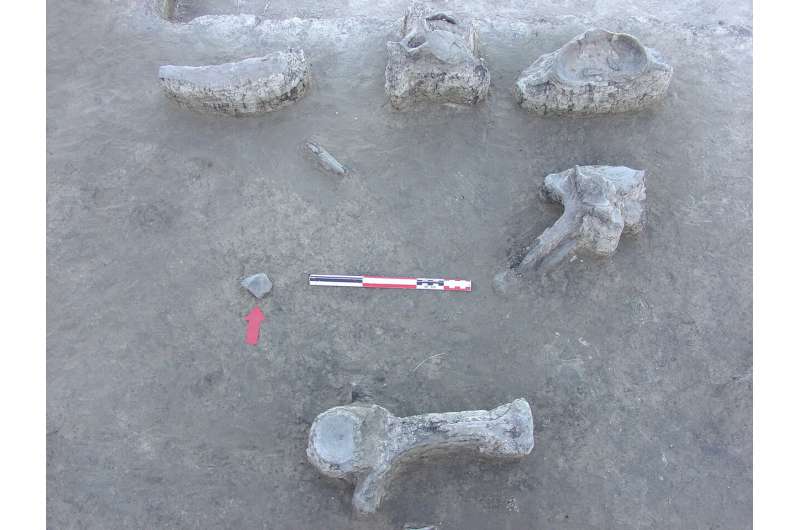
A team of researchers from the National University of Central Buenos Aires, Olavarría, Stafford Research and La Brea Tar Pits and Museum, has found evidence that suggests the giant sloth went extinct before the onset of the Holocene. In their paper published in the journal Science Advances, the team describes their study of giant sloth remains found in Argentina and what they found.
Prior research has shown that the giant sloth went extinct during the Pleistocene after the end of the last ice age. In this new effort, the researchers used a more stringent testing technique to date the age of giant sloth remains found at the Campo Laborde dig site. They report that their technique showed the sloth died much earlier than previous testing showed.
The researchers note that just one bone from a giant sloth had collagen that could be used for radiocarbon dating. They also note that the collagen had been contaminated by chemicals in the soil in which they were buried. They point out that prior efforts to date the sloth had not accounted for such contamination, and thus gave inaccurate results (most found the sloth to have died approximately 9,730 years ago—putting it during the Holocene). To overcome this problem the researchers used XAD purification chemistry to isolate amino acids in the collagen which could only have come from the sloth. Once that was done, traditional radiocarbon dating could properly date the sloth using the amino acids.
The dating technique showed that the giant sloth had perished approximately 10,570 years ago, still firmly in the Pleistocene. This finding is significant, because other studies have shown the sloth died at the hands of humans. This suggests that the large creatures may have been aided in their extinction by humans hunting them during a time when they were also at the mercy of a dramatically changing climate. The researchers suggest their findings also hint at the possibility that many mega-mammals in South America and perhaps other parts of the world also did not survive to the Holocene, as other studies have shown. If the other studies involved the use of contaminated collagen, their findings could have been off by thousands of years.
-
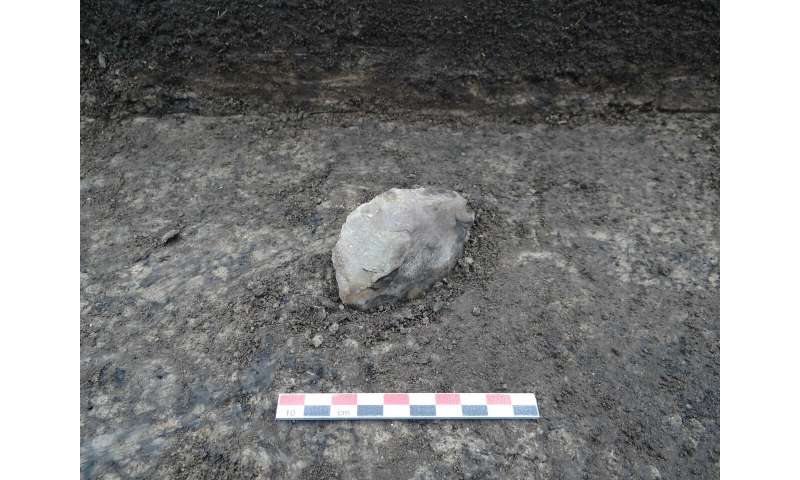
Lithic tool (biface). Credit: Gustavo Politis and Pablo Messineo -
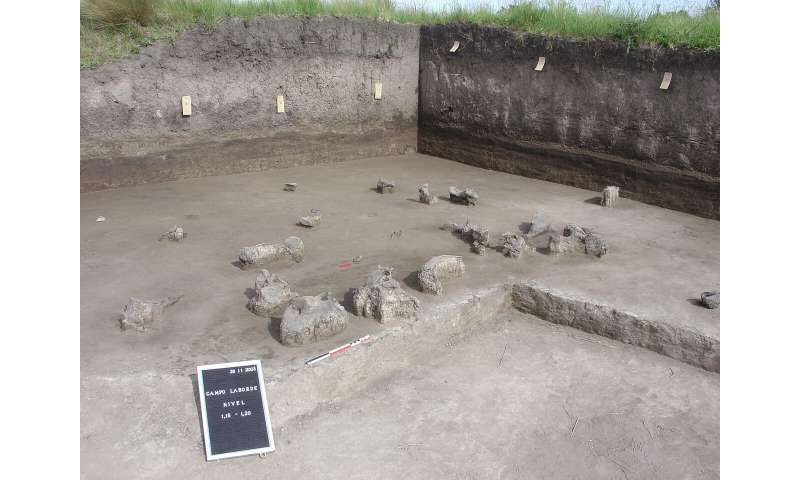
View of the giant ground sloth bones. Credit: Gustavo Politis and Pablo Messineo -
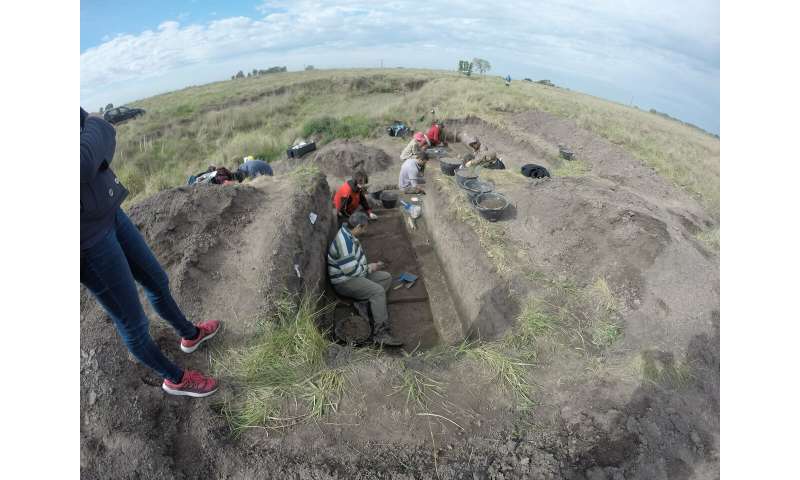
View of the excavation of Campo Laborde. Credit: Gustavo Politis and Pablo Messineo -
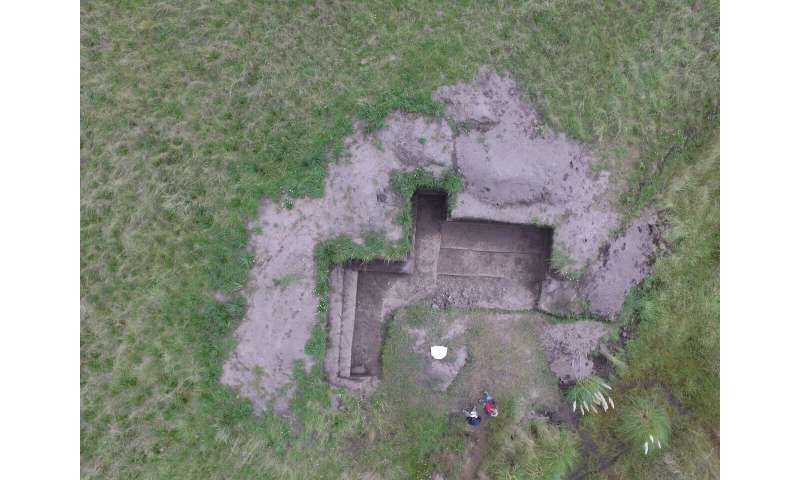
Aerial view of Campo Laborde. Credit: Gustavo Politis and Pablo Messineo
More information: Gustavo G. Politis et al. Campo Laborde: A Late Pleistocene giant ground sloth kill and butchering site in the Pampas, Science Advances (2019). DOI: 10.1126/sciadv.aau4546
Journal information: Science Advances
© 2019 Science X Network




















